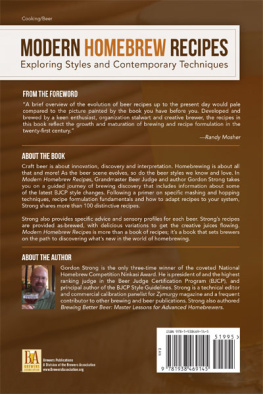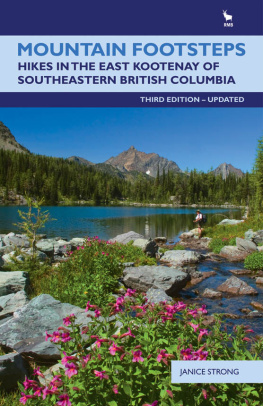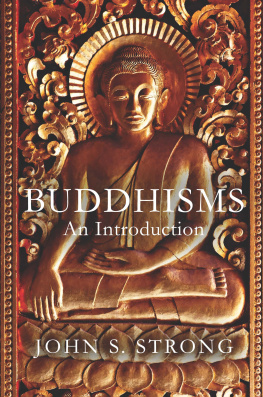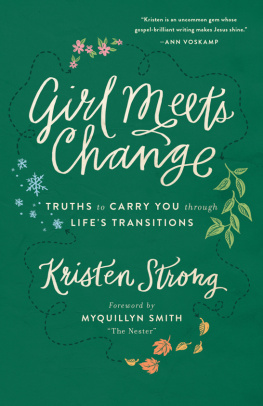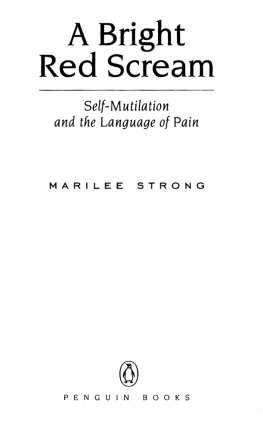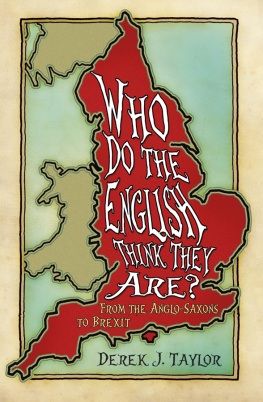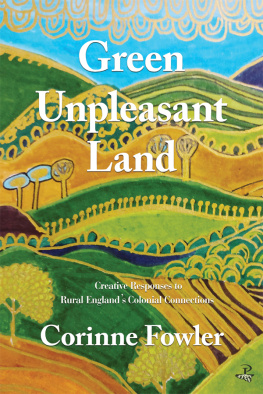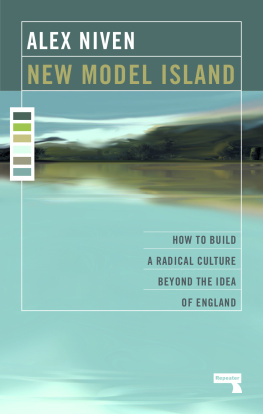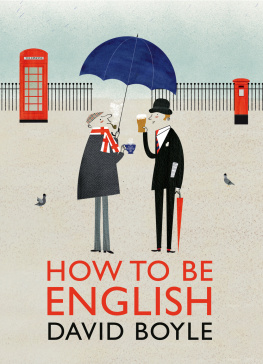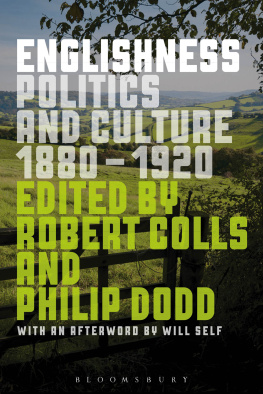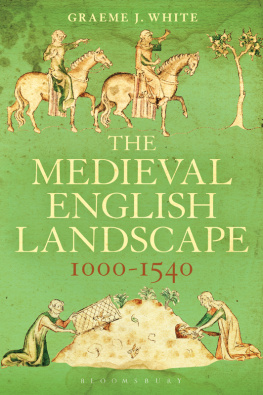CONTENTS
About the Book
What does it mean to be English?
* For centuries, Englishness was synonymous with Britishness, informed first by the political dominance of the English monarchs over the British Isles reaching its apogee in the rule of Elizabeth I and later by the islands imperial might and expansion. But alongside that tradition, reaching back to medieval times, there has also been a vision of England as the rural arcadia celebrated by painters and poets. While the mythology of empire lingers on in the national psyche, Roy Strong argues that it is the rural tradition combining aestheticism, pastoralism and patriotism that offers an answer to the present crisis of English identity.
* National identity essentially resides in the mind: evolving over time it is inevitably selective in how it epitomizes the ideals and aspirations of a people. In this searching and deeply passionate book, Roy Strong reveals an iconography of England rooted in the cultural imagination. Rather than simply depicting reality, art and literature have often ennobled and immortalised reality in a way that has directly affected how we see ourselves. Today we view Suffolk through the eyes of Constable, the Lake District comes to life in the poetry of Wordsworth, and the country house seems to emerge from the novels of Evelyn Waugh.
* Free from nationalism, chauvinism and political bias, Roy Strong offers a vision of England that is inclusive and relevant for everybody living in the country today an appreciation of the beauty of the English countryside, a love of nature and gardening, and a celebration of the dramas of Shakespeare, the paintings of Turner and the music of Elgar.
About the Author
Sir Roy Strong was director of the National Portrait Gallery from 1967 to 1973 and director of the Victoria & Albert Museum from 1974 to 1987, when he became a full-time writer, broadcaster and consultant. His books include The Story of Britain, The Arts in Britain, Coronation: A History of Kingship and the British Monarchy and, most recently, A Little History of the English Country Church.
List of Illustrations
Colour plate section
The Ditchley Portait of Queen Elizabeth I by Marcus Gheeraerts the Younger, c.1592. National Portrait Gallery, London.
Mr and Mrs Andrews by Thomas Gainsborough, c.1750. The National Gallery 2011.
The Hay Wain by John Constable, 1821. The National Gallery 2011.
Landscape of the vernal equinox by Paul Nash, 1943. The Royal Collection 2011 Her Majesty Queen Elizabeth II. Tate, London 2011.
Queen Elizabeth II by Pietro Annigoni, 1954. Fishmongers Hall, London. Camera Press London.
Illustrations in the text
Queen Elizabeth II by Pietro Annigoni, 1954. Fishmongers Hall, London. Camera Press London.
The Ditchley Portrait of Queen Elizabeth I by Marcus Gheeraerts the Younger, c.1592. National Portrait Gallery, London.
Playing cards from a pack depicting the counties of England and Wales, 1590. The Trustees of the British Museum.
Title page of William Camdens Britannia, 1607. The Trustees of the British Museum.
The burning of Latimer and Ridley at Oxford, woodcut from John Foxes Acts and Monuments, 1563. Private Collection/Bridgeman Art Library.
Title page of the King James Bible, 1611. The British Library.
Woodcut from Edmund Spensers The Faerie Queene, 1590. Private Collection/Bridgeman Art Library.
Title page of William Shakespeares First Folio, 1623. The British Library.
Detail of The Armada Portrait of Queen Elizabeth I by George Gower, c.1588. Woburn Abbey, Bedfordshire/Bridgeman Art Library.
Frontispiece of John Dees General and Rare Memorials Pertayning to the Perfect Arte of Navigation, 1577. Private Collection/Bridgeman Art Library.
Engraving after William Hogarth, O the Roast Beef of Old England (The Gate of Calais), 1748. Private Collection/Bridgeman Art Library.
The Maypole, engraving after Joseph Nash. Private Collection.
The English pursue the Spanish fleet east of Plymouth. Engraving by John Pine, 1739, of a tapestry made in 1595. Guildhall Library, City of London/Bridgeman Art Library.
Woodcut of Queen Elizabeth I, c.1588. Private Collection.
April, woodcut from Edmund Spensers The Shepheardes Calender, 1579. Private Collection/ Bridgeman Art Library.
A Peaceful Country, design for a Royal Masque by Inigo Jones, 1640. Chatsworth House, Derbyshire/ Devonshire Collection, Chatsworth. Reproduced by permission of Chatsworth Settlement Trustees/ Bridgeman Art Library.
Mr and Mrs Andrews by Thomas Gainsborough, c.1750. The National Gallery 2011.
A Kill at Ashdown Park by James Seymour, 1743. Tate, London 2011.
Wilton from the South East by Richard Wilson, c.1758-9. Collection of the Earl of Pembroke, Wilton House, Wiltshire/Bridgeman Art Library.
Pencil study of a man sketching using a Claude glass by Thomas Gainsborough, c.1750-5. Private Collection.
The Hay Wain by John Constable, 1821. The National Gallery 2011.
The Hireling Shepherd by William Holman Hunt, 1851. Manchester Art Gallery/Bridgeman Art Library.
The Valley Thick with Corn by Samuel Palmer, 1825. Ashmolean Museum, University of Oxford/ Bridgeman Art Library.
View of Stourhead in Wiltshire, engraving by Franois Vivares, c.1777. Private Collection/Bridgeman Art Library.
Orchards built in 1896 by Sir Edwin Lutyens; the gardens were laid out by Gertrude Jekyll. Country Life/Bridgeman Art Library.
A couple relaxing in their suburban garden, c.1905. Mary Evans Picture Library.
The Haycart, photograph by Henry Peach Robinson, 1868. Royal Photographic Society/Science & Society Picture Library.
Farm buildings at Poxwell Manor, Dorset, 1914. Country Life Picture Library.
Poster produced for the Great Western Railway (GWR), 1939. SSLP/Getty Images.
Holy Trinity, Littlebury, Essex, 1950. Photograph by Edwin Smith. RIBA Library, Photographs Collection.
Trecarrel Hall, Lezant, Cornwall by John Piper, 1943. Private Collection/Bridgeman Art Library. The Estate of John Piper, reproduced by permission.
Rupert Brooke, 1910. Photograph by Sherrill Schell. Time & Life Pictures/Getty Images.
The Brown Gallery at Knole, Kent. NTPL/ Andreas von Einsiedel.
Morris dancing, c.1956. Mary Evans Picture Library/ John Gay.
Poster advertising the 1947 Proms season at the Royal Albert Hall. Getty Images.
The Wyck, Hitchin, Hertfordshire, 1905. Country Life Picture Library.
Cricket match at West Ilsley, Berkshire. Bob Thomas/Getty Images.
The last night at the Proms, 2010. Getty Images.
Queen Elizabeth II. Photograph Annie Leibovitz/ Contact Press Images.
Chiswick House and gardens, 1879. Country Life Picture Library.
Reverse of an Elizabethan gold medal by Nicholas Hilliard, c.1580-90. The Trustees of the British Museum.
Every effort has been made to trace and contact copyright holders. The publishers will be pleased to correct any mistakes or omissions in future editions.
Preface
This book is the latest in a series of publications, stretching over a decade and a half, in which I have tried to present our nations past to a wide audience. This desire to communicate our history in particular its creativity and astonishing immediacy and how it has shaped our lives today has been the focus of my entire professional career. As director of the National Portrait Gallery and the Victoria & Albert Museum my guiding principle was to make our rich past available to everyman. That mission was often combined with alerting the public to the threat to some of our national icons; three landmark exhibitions which I staged in the 1970s concentrated on the history and uncertain future of our country houses, churches and gardens, triggering a huge response that helped ensure their survival.
Next page


